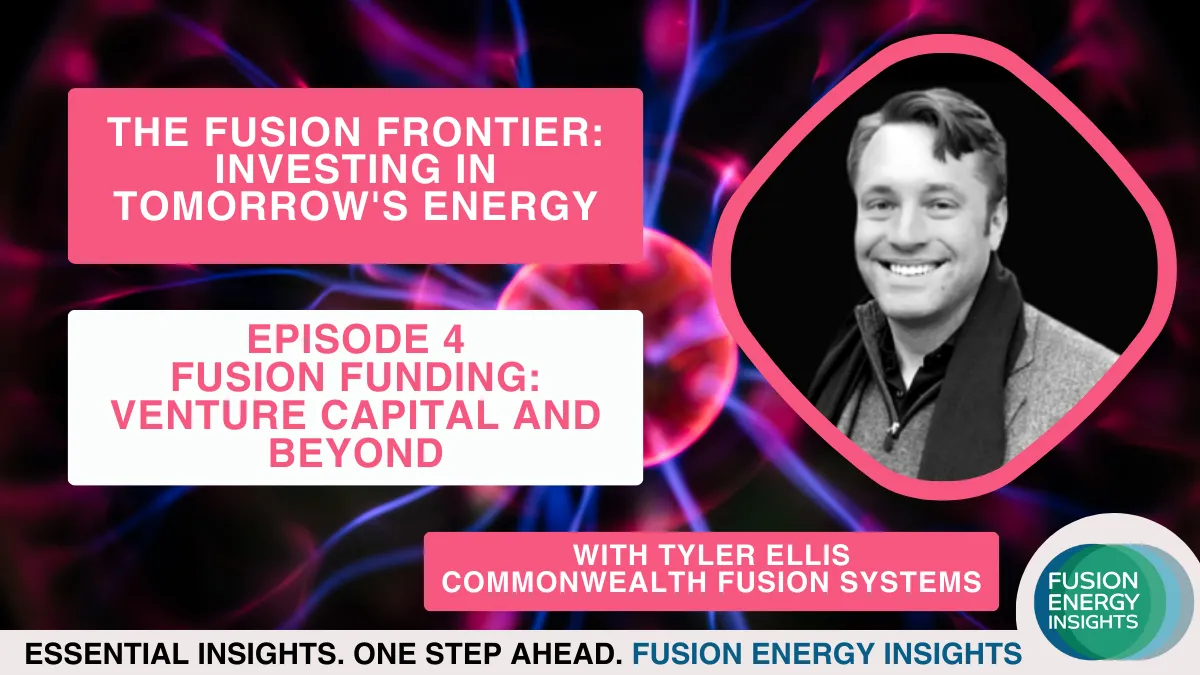Fusion Funding: Venture Capital and Beyond with Tyler Ellis
In our recent podcast series, The Fusion Frontier: Investing in Tomorrow’s Energy, we spoke to experts in fusion energy and investment to dig deeper into the potential of fusion as a clean energy source, why investors invest in fusion, and some of the risks and opportunities along the way.
In Episode 4, we spoke to Tyler Ellis, investor and advisor at Commonwealth Fusion Systems, to understand the investment needed to bring commercial fusion into play.

Here are 3 key insights from the conversation.
1. There are 3 main types of risk to weigh up when considering investing in a fusion company
Tyler explains that there are 3 types of risk. These are:
· Physics risks – what is the Q value able to be achieved? The Q value is how much fusion power is generated against the amount of energy input. ITER aims to deliver a Q value of 10, meaning ten times more fusion power will be generated than being input as heating power. It is important to understand what different fusion projects are aiming for in terms of Q value.
· Technological risks – what are the other technologies required to allow the fusion concept to be successful? For most companies, the breeder blanket is a considerable technological risk where development work is required to sustain fusion reactions.
· Scale-up risks – does a company have what it takes to develop their fusion concept at scale? This area of risk involves the supply chain, project management risks, and the management team’s capability to drive the project forward. Ultimately, can the concept be delivered on budget and on time and deliver power to many?
Tyler argues that the risk level is constantly changing depending on the stage where a company is at: “the technology risk goes down over time, but then you’re working on scale-up risk and ultimately deployment risk. Overall, the different types of return on investment in the later stage are not as big as you would expect in the earlier stages”.
2. It is not a “winner takes all” market. Multiple technologies will get there
Tyler says: “There are many different types of natural gas power plant designs or jet engine designs, it's not just one company that gets there first and then that's it. There probably will be several that get there. So by placing multiple bets, you increase the probability that one of those companies would hit.”
Investors should recognise that one company successfully deploing commercial fusion technology will be incredibly valuable to the world, but it is likely that several companies will achieve this. Investors should consider a range of companies.
3. Public-private partnerships are key to closing the funding gap
For the commercialisation of fusion technology, public-private partnerships will be key for funding. A funding gap currently exists between the public and private fusion sectors. Fusion technologies are very expensive and funding needs to accelerate to fully fund demonstration machines. More financial resources are needed to provide full support to the private sector. This is where public-private partnerships come in, with government funding providing an essential boost to private sector investment.
Influential private sector investors, for example Bill Gates and Jeff Bezos, have changed the investment market by making a clear signal on the types of investment that they want to make. They can create larger funds and can therefore fund larger staff bodies able to do more diligence on technologies to understand the full risk profile before investing in a fusion company. These funds are useful and are making a mark on the fusion investment market, but they are not enough alone. More funding will be needed to build the first fusion plants, which is why it is important for governments to find ways of working with the private fusion sector and form partnerships.
And finally…
Tyler sees the current investment market for fusion as critical for the future: “the investments that are made into energy and sustainability technologies now are where the new fortunes are going to be made. This is where the next generation of opportunity is going to be.”
